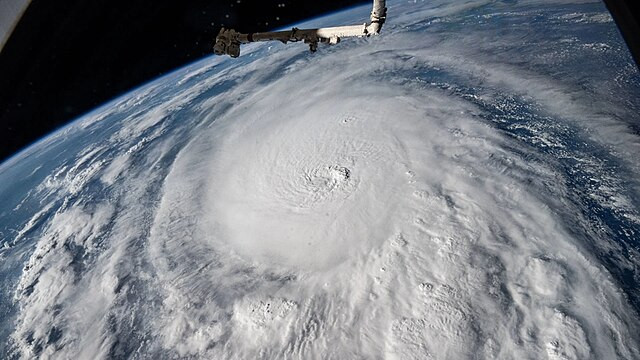Hurricane Milton left a trail of devastation across Florida, claiming at least 16 lives and plunging over 2 million homes and businesses into darkness as communities struggle to recover from the powerful storm. Making landfall as a Category 3 hurricane near Siesta Key in Sarasota County on Wednesday night, Milton unleashed 120 mph winds, torrential rain, storm surges, and spawned dozens of tornadoes, causing widespread damage throughout the state.
The storm's ferocity was evident in its immediate aftermath, with the National Hurricane Center reporting 28-foot waves, destructive winds, and significant flooding in coastal and inland areas. One of the hardest-hit locations was St. Lucie County, where a tornado outbreak led to the deaths of six residents in a retirement community. Within just 20 minutes, a dozen twisters ripped through the area, leaving a path of destruction and despair.
As of Friday morning, approximately 2.2 million utility customers in Florida remained without power, with west-central regions facing the most significant outages. Florida Governor Ron DeSantis announced that over 50,000 linemen had been deployed to restore electricity, yet many residents face days, if not weeks, before power is fully restored. "This is going to be a long road to recovery, but we are committed to getting every community back on its feet," DeSantis said in a press briefing.
Milton's impact was felt acutely in Tampa Bay, where the storm's powerful winds caused a crane to collapse into the Tampa Bay Times building in St. Petersburg and tore apart the roof of Tropicana Field, the home of the Tampa Bay Rays. Although the area avoided a worst-case scenario as the storm shifted south, pulling water away from the shoreline, the damage to infrastructure was substantial. St. Petersburg alone recorded over 18 inches of rain, with 8.5 inches falling in just three hours, according to the National Weather Service.
Across the state, flooding remains a severe concern as rivers and waterways swell beyond their banks. Hillsborough County and communities near Alafia, close to Tampa, are bracing for major flooding, with officials warning residents to remain on high alert. Coastal areas in northeast Florida, including Duval, Brevard, St. Johns, and Volusia counties, are still under advisories for dangerous rip currents and waves reaching up to 12 feet, further complicating recovery efforts.
The devastating toll of Hurricane Milton is not limited to property damage; the human cost continues to rise. In addition to the tornado fatalities in St. Lucie County, a woman in her early 70s was killed in Tampa after a tree limb fell on her during post-hurricane cleanup. In Orange County, which includes Orlando, a man was electrocuted while clearing debris after stepping on a downed power line. Other confirmed fatalities include two in St. Petersburg, four in Volusia County, and one each in Polk and Citrus counties, bringing the state's total death toll to at least 16.
The situation is further exacerbated by gasoline shortages throughout the region, a consequence of the mass evacuations and the widespread power outages affecting fuel stations. While fuel supplies seemed relatively stable around the outskirts of Orlando, many stations in Tampa and St. Petersburg remain without power, forcing emergency workers to rely on secure fuel tankers.
As residents begin to pick up the pieces, the National Weather Service is deploying teams to assess the extent of tornado damage across Florida's Treasure Coast. Early estimates suggest that up to 42 tornado warnings were issued, with many neighborhoods left in ruins. The Spanish Lakes Country Club Village in St. Lucie County was one of the hardest hit, with homes obliterated, cars overturned, and trees uprooted, a stark reminder of nature's unforgiving force.
While Florida continues its recovery efforts, the National Hurricane Center has warned that hazards remain from damaged buildings, downed power lines, and residual floodwaters, even though the immediate threat from Hurricane Milton has passed. Communities across the state are now faced with the monumental task of rebuilding, a process that will require both state and federal support.






